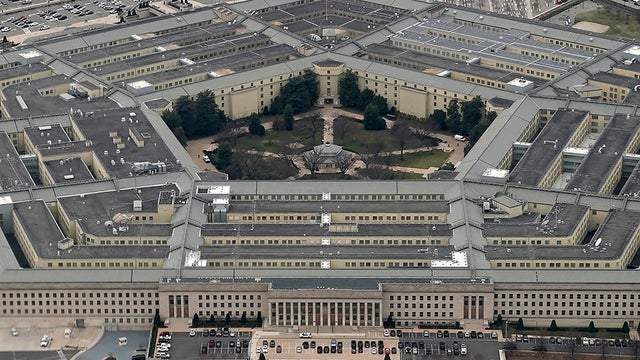Pentagon proposes $704B budget with boost for nukes, cuts to ships

The Trump administration is proposing a $704.5 billion Pentagon budget for fiscal year 2021 that boosts nuclear weapons modernization and cuts shipbuilding.
The Pentagon’s budget proposal released Monday is part of the Trump administration’s overall $740.5 billion defense budget request, which also includes $19.8 billion for the National Nuclear Security Administration.
The Pentagon budget breaks down into $636.4 billion for the base budget and $69 billion for a war fund known as the Overseas Contingency Operations account.
Budget proposals lay out an administration’s priorities for the coming year, but are not binding as Congress has the power to set spending levels. Lawmakers often ignore the budget recommendations and set their own spending priorities, a pattern likely to continue this year.
Unlike the administration’s domestic budget request for fiscal 2021, the defense budget proposal adheres to the two-year bipartisan budget agreement Congress passed last year.
But the defense proposal is still likely to rankle lawmakers, including Democrats who oppose bulked up nuclear spending and proponents in both parties of the Navy’s stated goal of having a 355-ship fleet.
“The president’s shipbuilding budget is not a 355-ship Navy budget,” Rep. Joe Courtney (D-Conn.) said in a statement. “As chair of the Seapower Subcommittee, I can say with complete certainty that, like so much of the rest of the president’s budget, it is dead on arrival. This weak, pathetic request for eight ships – of which two are tugboats – is not only fewer ships than 2020, but fewer ships than the Navy told us last year it planned for 2021.”
Sen. Roger Wicker (R-Miss.) said in a statement that he was “concerned that the budget proposal released today does not provide adequate funding to the Navy for shipbuilding, which is necessary to reach our statutory national policy of 355 ships and ensure that our fleet remains unrivaled at sea.”
Under the budget released Monday, the Navy would get $19.9 billion to buy eight new ships, a $4.1 billion cut from this fiscal year.
The shipbuilding budget would buy two Arleigh Burke-class destroyers, one Columbia-class submarine, one Virginia-class submarine, one FFG(X) frigate, one LPD-17 amphibious transport dock and two towing and salvage ships.
Meanwhile, the Pentagon budget would include $28.9 billion for nuclear weapons programs, including $17.7 billion to modernize nuclear delivery systems and support ongoing improvements to nuclear command, control and communications systems.
The National Nuclear Security Administration (NNSA), the semi-autonomous agency within the Energy Department that is responsible for maintaining the safety of nuclear weapons, would also get a nearly 20 percent budget boost at $19.8 billion.
Of the NNSA budget, $15.6 billion would go toward nuclear weapons programs to “support the existing nuclear weapons stockpile, extend the life of our nuclear warheads, recapitalize facilities and maintain world leading science supporting the nuclear weapons stockpile,” according to a White House fact sheet.
The Pentagon budget proposed Monday would also provide $56.9 billion for aircraft, including $11.4 billion for 79 F-35 Joint Strike Fighters, $3 billion for 15 KC-46 Tanker replacements, $2.1 billion for 24 F/A-18E/F Super Hornets and $1.6 billion for 12 F-15EX fighter jets.
The budget would also begin retiring several aircraft, including 24 RQ-4 Global Hawk surveillance drones, 17 B-1 bombers and 44 A-10 attack planes. The proposed retirements could rankle lawmakers with vested interests in the aircraft, such as those who represent installations where the aircraft are based.
The fiscal 2021 budget would also fund a 3 percent pay raise and 2,153,000 active duty and reserve personnel, an increase of 13,000 service members from this year.
Unlike last year, the Pentagon’s budget proposal does not include any money to backfill the $3.6 billion in military construction funds that were taken to build Trump’s southern border wall.
But the administration maintains the ability to shift money to border wall construction under the national emergency Trump declared, and reports have said the administration is eying using another $7.2 billion from the Pentagon for the wall.
Photo: © Greg Nash




